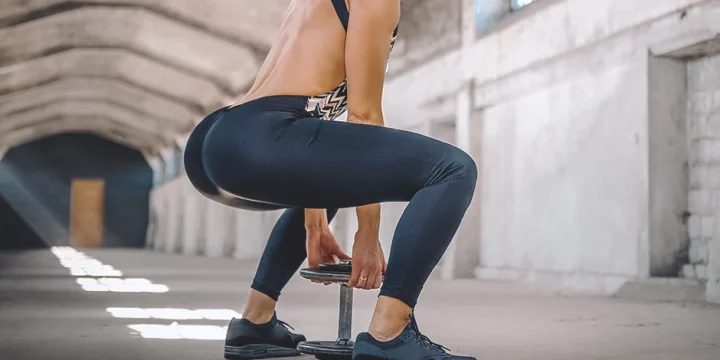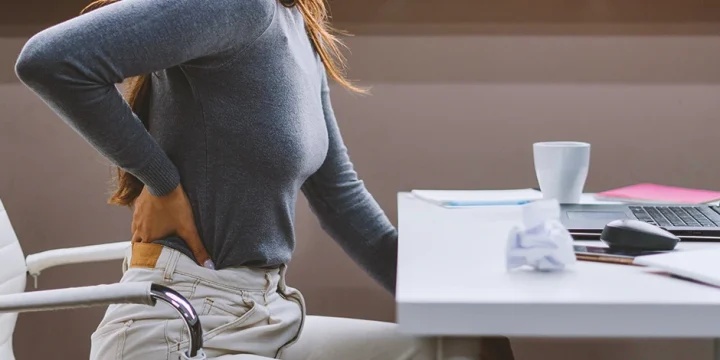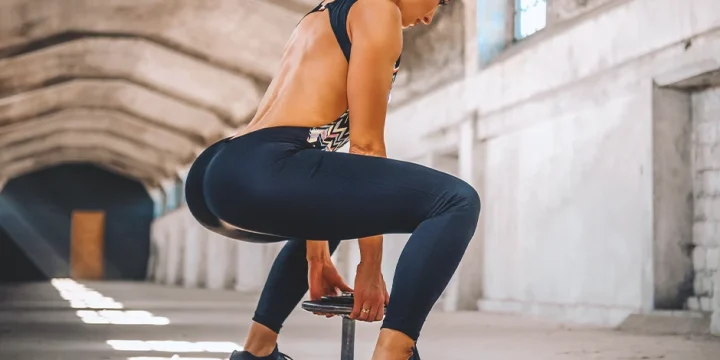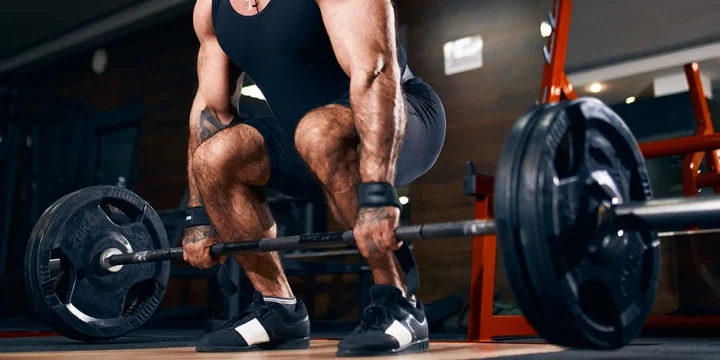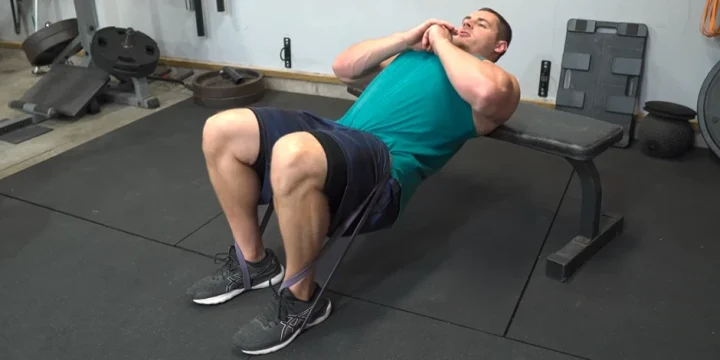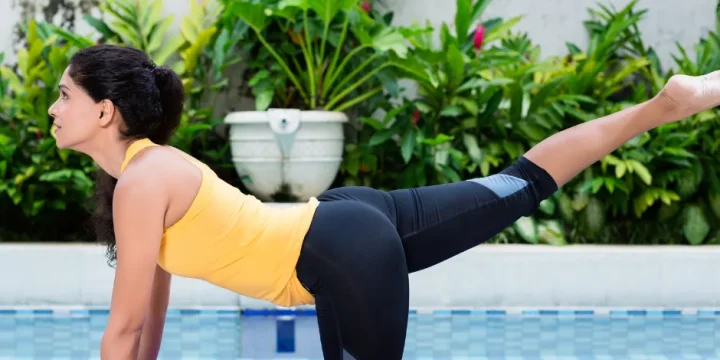As a fitness instructor, I've worked with multiple clients with hip flexibility problems, hip tightness, and even hip pain.
I usually put them on pelvis rotation exercises and stretches, and after a few weeks, the problems always fade away.
So, to help my readers experiencing the same issues, I've compiled some exercises that have worked for my clients and reviewed them with a physical therapist who has rubber-stamped this report.
Quick Summary
- Clamshells, fire hydrants, trunk rotation, single-leg squats, and hip thrusts are excellent exercises that can improve hip external rotation.
- Hip external rotation occurs when the knee and thigh rotate outward and away from the body.
- A study by the National Institutes of Health highlights the importance of hip external rotator strength for dynamic control and better hip function, especially in activities like landing from a jump.
- In my opinion, consistent practice of targeted hip external rotation exercises not only enhances hip mobility but also significantly improves overall lower body strength and stability.
What Is Hip External Rotation?

Based on a study published by the National Institutes of Health (NIH), hip external rotation is defined as the lateral rotary movement of the femur in the transverse plane around its longitudinal axis away from the midline; it is also called lateral rotation [1].
Per a 2015 study published by the National Institutes of Health (NIH), the range of motion for both hip internal and external rotation is 45° and they are important for assessing laterality [2].
This happens when the knee is extended externally. A great example is when seated with crossed legs, or Indian-style sitting.
These external movements are made possible by the hip external rotators, a group of muscles that play a role in hip stabilization and rotation when walking, running, riding a bicycle, and in intense human performance activities such as squatting.
Additionally, a study published by the National Institutes of Health (NIH) shows that having hip external rotator strength allows for better dynamic control and hip function when landing from a jump [3].
Learn More: Best Rotational Exercises
Muscles Worked

The hip comprises 21 muscles that work together to provide stability and mobility in the hip.
They especially play a pivotal role in hip rotation.
These hip external rotator muscles work in tandem to enable hip external rotation movements.
Here are the main ones:
Gluteal Muscles
There is hardly a lower-body movement that does not involve the glutes. And the hip external rotation movement is no exception.
Gluteal muscles comprise:
- Gluteus Maximus
- Gluteus Minimus
- Gluteus Medius
Lateral Rotators
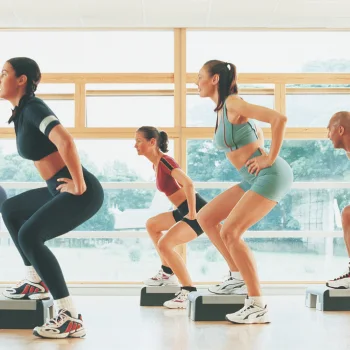
Also known as "the deep six," lateral rotators lie deep within the hip structure and work together with the primary function of helping rotate the hip externally.
They also play other minor hip movement roles.
The six deep muscles include:
- Obturator Internus
- Obturator Externus
- Quadratus Femoris
- Piriformis
- Gemellus Superior
- Gemellus Inferior
"These 6 muscles (lateral rotators) sit deep within the hip structure and work together for one common purpose: to externally rotate the hips. While some of these muscles will also assist in other movements, external rotation is their primary function."
- Garrett Reid, Strength & Conditioning Coach, Author at Setforset.com
Hip Flexors
Some hip flexors also play a part in external hip movement by helping the muscles flex.
Examples of hip flexor muscles include:
- Iliopsoas Muscle
- Sartorius
Best Exercises

Here are some exercises to help improve hip external rotation:
Clamshells
Drawing from my experience, clamshell exercises have been a staple in our physical therapy sessions for back pain relief. They effectively target the gluteus medius, stabilizing the pelvis, as many of my clients have successfully experienced.
The cool part about clamshells is that they're super easy to do and effective in improving hip external rotation.
So, to make them more challenging, use a resistance band. Place it around your thigh, just above your knee.
How to do it:
- Start by lying down on the floor on one side of your body. Keep your knees bent at a 45-degree angle with one leg stacked on the other.
- While keeping your feet together, rotate your top knee up and outward while the lower knee is pressed against the floor.
- Once you reach up, pause briefly before returning the knee to the starting position.
- Repeat 10–20 times, then switch to the other side.
Fire Hydrants
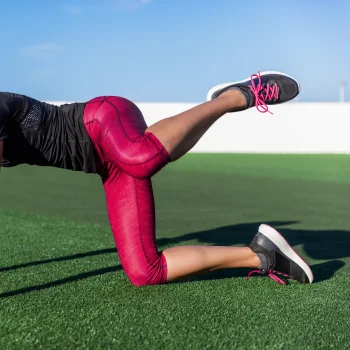
Fire hydrants are bodyweight exercises that work the glutes, an important muscle in hip external rotation mechanics.
They can be done with a resistance band wrapped around your thighs just above the knees for more resistance.
Here's how to do it:
- Start by getting on all fours. Your knees should be directly under your hips, and your palms should be under your shoulders.
- Keep your back straight and parallel to the ground throughout the exercise as you engage your midsection.
- While keeping your right leg bent at a 90-degree angle, lift your right knee up and outward to open the right hip.
- Once you reach up, pause briefly before returning the right leg to the floor.
- Repeat on the same side for 10–20 reps, then switch legs and do the same with your left knee.
Trunk Rotation
My team discovered through using this product that trunk rotation exercises significantly improve core strength and stability.
It also works your lower back and keeps your hips flexible.
Here's how to do it:
- Lie down on your back with your knees bent and feet flat on the ground. Let your arms extend to the side and on the floor to aid balance.
- Now, gently rotate your knees to the right side as far as your mobility can allow while keeping your knees bent and upper body stationary until the left leg is stacked on top of the right leg.
- Once you reach your furthest point, hold the position for a few seconds.
- Return slowly to your starting position, then repeat the movement, but now to your left side.
- That's one rep; repeat 15 times to complete one set of three.
Single Leg Squat With External Rotation
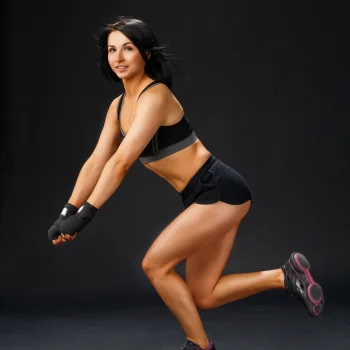
External hip muscles are responsible for maintaining balance and stability, especially when standing on one leg.
So it makes sense to perform exercises such as the single-leg squat to strengthen these muscles and improve function.
You will need an elevated platform, like a box, to complete this exercise.
Here's how to do it:
- Stand on a box with your right foot. Keep the left leg hanging down to the side of the box. This is your starting position.
- Brace your core and lower yourself into a squat position with your right foot while allowing your left foot to drop and hover on the ground.
- Once you reach down, pause briefly before slowly straightening your knee to return to your starting position.
- Repeat for the desired number of reps before switching to your left foot.
Hip Thrusts
As we saw earlier, the glutes play a major role in external rotation. So it makes sense to strengthen them to improve hip flexibility. This is where hip thrusts come in.
Based on a study from the National Institutes of Health (NIH), hip thrusts are compound movements that primarily target the gluteus maximus along with the hamstrings and other lower body muscles [4].
Wrap a band around your thigh to add intensity to the external rotation exercise.
Here's how to do hip thrusts:
- Place your upper back on a sturdy bench and keep your knees bent with feet flat and planted firmly on the ground.
- Place a loaded barbell on your hip joint and push upwards until your thighs, hips, core, and chest are in a straight line. Contract your glutes throughout the movement.
- Once you reach the top of the movement, pause briefly before slowly lowering the bar.
- Repeat until you reach your desired number of reps.
In addition to these exercises, stretching can also help loosen tight muscles in your hips.
Here are a few helpful stretches for hip external rotator flexibility:
- Figure 4 Stretch
- Chair Stretch
- Seated Floor Stretch
- Pigeon Pose
While they can still be effective when done on their own, adding a protein powder supplement to the regimen can help you get faster results.
FAQs
What Are the Benefits of External Hip Rotation Exercises?
The benefits of external hip rotation exercises are increased strength and endurance in the hip external rotators for more stability, which can help prevent injury in the hips, knees, and ankles.
How Often Should You Do External Rotation Exercises?
You should do external rotation exercises about 2–3 times per week.
References:
- www.ncbi.nlm.nih.gov/pmc/articles/PMC9254021/
- www.ncbi.nlm.nih.gov/pmc/articles/PMC4339156/
- https://pubmed.ncbi.nlm.nih.gov/26110347/
- https://www.ncbi.nlm.nih.gov/pmc/articles/PMC6544005/
About The Author
You May Also Like
